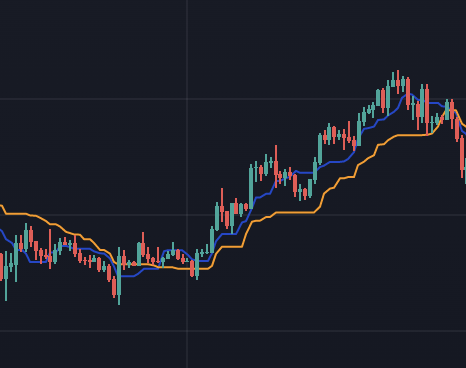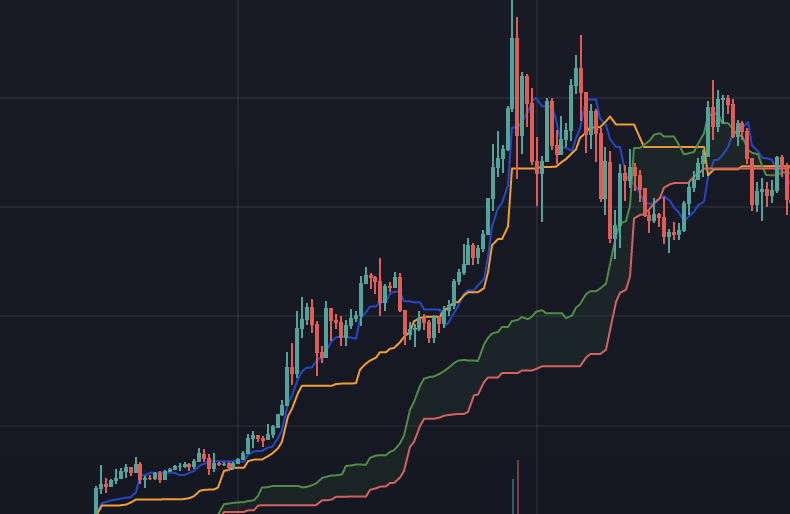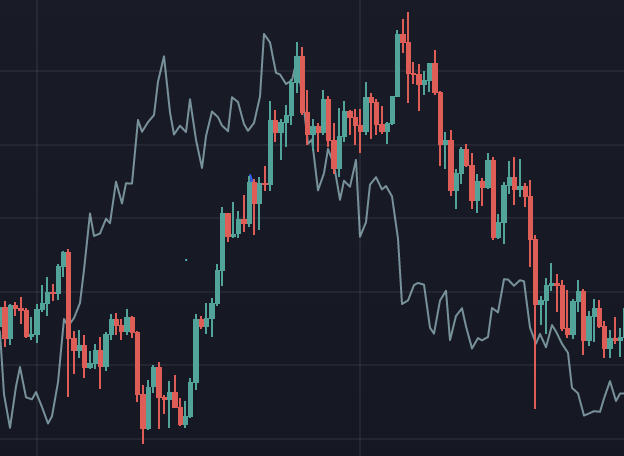Ichimoku Kinko Hyo, also known as Ichimoku Kinko Hyo, Cloud Chart, etc. It is a technical analysis trading system developed before World War II. This indicator focuses on "price balance". Using factors such as the past, present, future, time, amplitude and volatility to observe the balance of prices can help investors determine market trends and price support and resistance levels, and then find opportunities to enter and exit the market.
Invented by Japanese journalist Goichi Hosoda in the 1930s, Ichimoku Sanjin. In the Ichimoku Kinko Hyo, three cycles need to be set: short (one and a half weeks), medium (one month), and long (two months). Since the working hours in Japan used to be 6 days a week, the traditional setting is (9, 26, 52). However, since the working hours in modern society have been changed to five days a week, some people have proposed that it should be revised to (7, 22, 44).

How it works
The Ichimoku Kinko Hyo is composed of five lines. These lines are calculated by taking the average of the highest and lowest prices in a given period, which is slightly different from the moving average used in normal times. The calculation method can be changed according to the set period. The following is an explanation of the traditional (9, 26, 52).
Conversion Line Short Axis Express Line: The average of the highest and lowest prices in the past 9 days. Used to analyze short-term trends.
Base Line (Base Line) Central Axis Slow Line: The average of the highest and lowest prices in the past 26 days. Used to analyze medium-term trends.
Lagging Span back-moving indicator: move the current price to the left by the 26-day slow axis line.
Leading Span A: The average of the conversion line and the baseline, predicting the trend for the next 26 days.
Leading Span B: The average of the highest and lowest prices of the past 52 days, a line that predicts the trend of the next 26 days.
Since both the Leading Band A and the Leading Band B predict the market trend for the next 26 days, they are helpful in analyzing future price changes. The space between the Leading Band A and the Leading Band B forms a Kumo Cloud.
Analyze charts
Since the Ichimoku Kinko Hyo is composed of five lines, trading signals also depend on many factors. We can interpret them from three aspects:
1. The relationship between conversion line, base line and market price
When the underlying price is above the baseline, it is a signal of a strong market. Otherwise, it is a signal of a weak market.
When judging the trend, the conversion line must be above the baseline for an upward trend, and the conversion line must be below the baseline for a downward trend.
As shown in the figure below, the conversion line (blue line) forms a golden cross above the baseline (orange line), indicating that the market has strong upward momentum.

2. Cloud Band Interpretation
The Cloud Band is a signal for interpreting market trends. Since both the Leading Band A and Leading Band B are indicators for predicting the future, they can be used as a basis for judging future support and resistance.
When the price is above the cloud, the cloud is green, indicating that bulls have the upper hand and acts as a support band.

When the price is below the cloud, it indicates that bears have the upper hand and acts as a resistance band.

In an upward trend, when the cloud area becomes thinner and the Leading Band A and Leading Band B begin to cross, it means that the market high point is no longer going higher. If the Leading Band A falls below the Leading Band B, it means that the cloud area turns, and the cloud area changes color, indicating that the price trend may be about to reverse.

3. Interpretation of the Chixing Band
The Chixing Band is also an important market indicator, reflecting whether the current price is higher or lower than the market price 26 days ago. If the market price is higher than the Chixing Band, it is a bullish trend, and vice versa, if it is lower than the market price, it is a bearish trend.
It is usually used together with other indicators of Ichimoku Kinko Hyo, not alone.

Ichimoku Kinko Hyo in the Crypto Market
The original configuration of the Ichimoku Kinko Hyo was based on the three cycles calculated based on the six-day work week in Japan in the past, with the time configurations of short (one and a half weeks), medium (one month), and long (two months) as (9, 26, 52). However, most people now work five days a week, so some people have suggested that the time configuration should be changed to (7, 22, 44) or (8, 22, 44).
Since the cryptocurrency market is a 24/7 trading, some cryptocurrency investors have raised the question of whether it should be adjusted to (10, 30, 60) to be more suitable for the cryptocurrency market. However, some people have also suggested that such arbitrary changes will cause the Ichimoku Kinko Hyo to generate more useless signals and affect judgment.
Limitations of Ichimoku Kinko Hyo
Although the Ichimoku Kinko Hyo can determine the market trend and give strong support and resistance levels to determine the timing of entry and exit, it is more suitable for one-sided market conditions. When the direction of the volatile market is unclear, it cannot give useful trading signals.
In addition, although the Ichimoku Kinko Hyo uses leading edge to predict the future market, there is no predictive nature in the formula. Both are based on past prices to estimate future trends. Although they can sometimes predict future trends, there is no guarantee that what happened in the past will repeat itself.
Summarize
Ichimoku Kinko Hyo is a technical analysis tool composed of several indicators, so the entry threshold is quite high. However, since its patterns are all composed of fixed formulas, compared with other technical analysis tools that rely on subjective judgment (such as drawing trend lines, judging patterns, etc.), this strategy greatly simplifies the manpower requirements during trading.
Like other technical indicators, Ichimoku Kinko Hyo should be used in conjunction with other technical indicators to reduce risk. If you have any questions about technical analysis, you can refer to "What is Technical Analysis" or go to the Gate.io Education Academy to find any knowledge you need.


